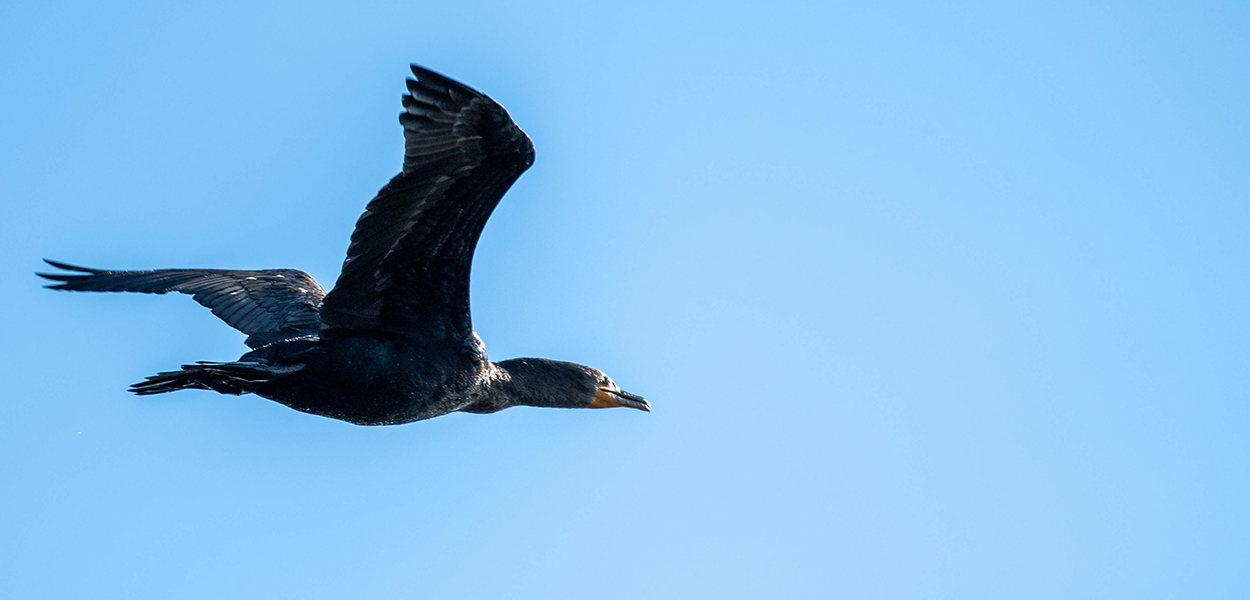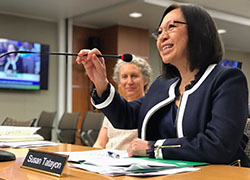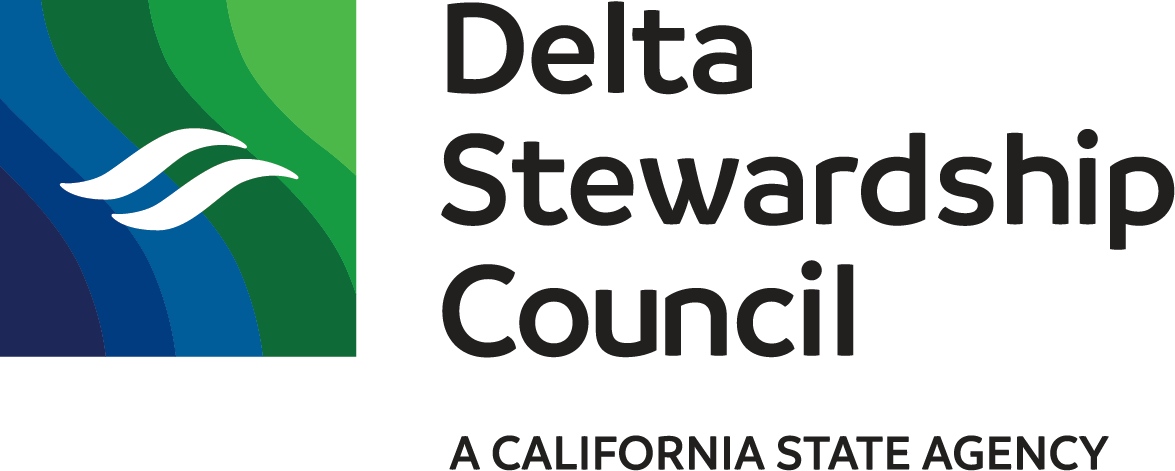
A cormorant flying over the Dutch Slough in the Sacramento-San Joaquin Delta near Oakley, California. Photo: Ken James/California Department of Water Resources
Recognizing the Delta’s Place in the Greater Watershed and Beyond
November 18, 2019
By Susan Tatayon
Last month marked the start of the 2020 water year, which is off to a dramatic start. Early rain and sleet surprised many in late September. Just two weeks later, fierce wildfires fueled by extreme winds, dry vegetation, and low humidity charred more than 100,000 acres and destroyed hundreds of structures, forcing tens of thousands of people from their homes and businesses. Through all of this, I am reminded of the words of John Muir, "When we try to pick out anything by itself, we find it hitched to everything else in the universe.”
The Sacramento-San Joaquin Delta is hitched to so many things. Our estuary is a critical habitat for fish and wildlife, home to millions of people, and the hub of our state’s water delivery system. From the Sierra Nevada to the mouth of the San Francisco Bay, what happens in one part of the Delta watershed affects the entire estuary.
An estuary is a dynamic mixing zone. The interconnectedness of the Bay-Delta to the surrounding watershed was the prominent theme at the 14th Biennial State of the San Francisco Estuary Conference held last month in Oakland. Hosted by the San Francisco Estuary Partnership and sponsored by the Delta Stewardship Council and others, the event brings together more than 800 researchers, planners, natural resource managers, community members, and decision makers to discuss the current health of the estuary.
These gatherings are not just useful for scientific exchange; they foster meaningful dialogue around policy and management actions needed to improve the health of the estuary. At this year’s conference, multiple speakers called for a shift from the One Delta, One Science approach for managing the Bay-Delta to One Estuary, One Science. The intent is increased collaboration and communication with partners throughout the entire estuary because a healthy estuary benefits fish and wildlife, people, water supply, and all Californians.
A holistic, systems approach to watershed management is not new. Managers have long been aware that the arrival of an invasive species at the Port of San Francisco poses a threat far beyond the reach of the Bay. The same is true for droughts, floods, and other environmental stressors. However, as factors such as climate change increasingly strain our environment, the need for collective management and action has never been greater.
As chair of the Delta Plan Interagency Implementation Committee (DPIIC), I can say that system wide management conversations are taking place at the highest levels of state and federal government. Although the translation to targeted management action takes time, the DPIIC is steadily breaking down the institutional silos that have worked against a One Estuary, One Science management approach. Despite their varying authorities and interests, DPIIC leaders all agree on the importance of - and are working toward - creating a shared pool of data, processes, and resources from which to draw our conclusions. This collective effort will ultimately lead to better-informed decisions and more coordinated investments to strengthen the long-term resiliency of our entire system.
No matter what the new water year holds, I am confident that we will continue to build upon the strong foundation of collaboration in support of One Estuary, One Science, and a more resilient California water landscape for all. Happy new water year, everyone.

About the Author
Susan Tatayon is Chair of the Delta Stewardship Council and has more than 30 years of experience in water resources policy, planning, and management. Her monthly blog shares updates about the direction of the Council, progress toward implementing the Delta Plan, and achieving the coequal goals of water supply reliability and restoring the Delta’s ecosystem.

